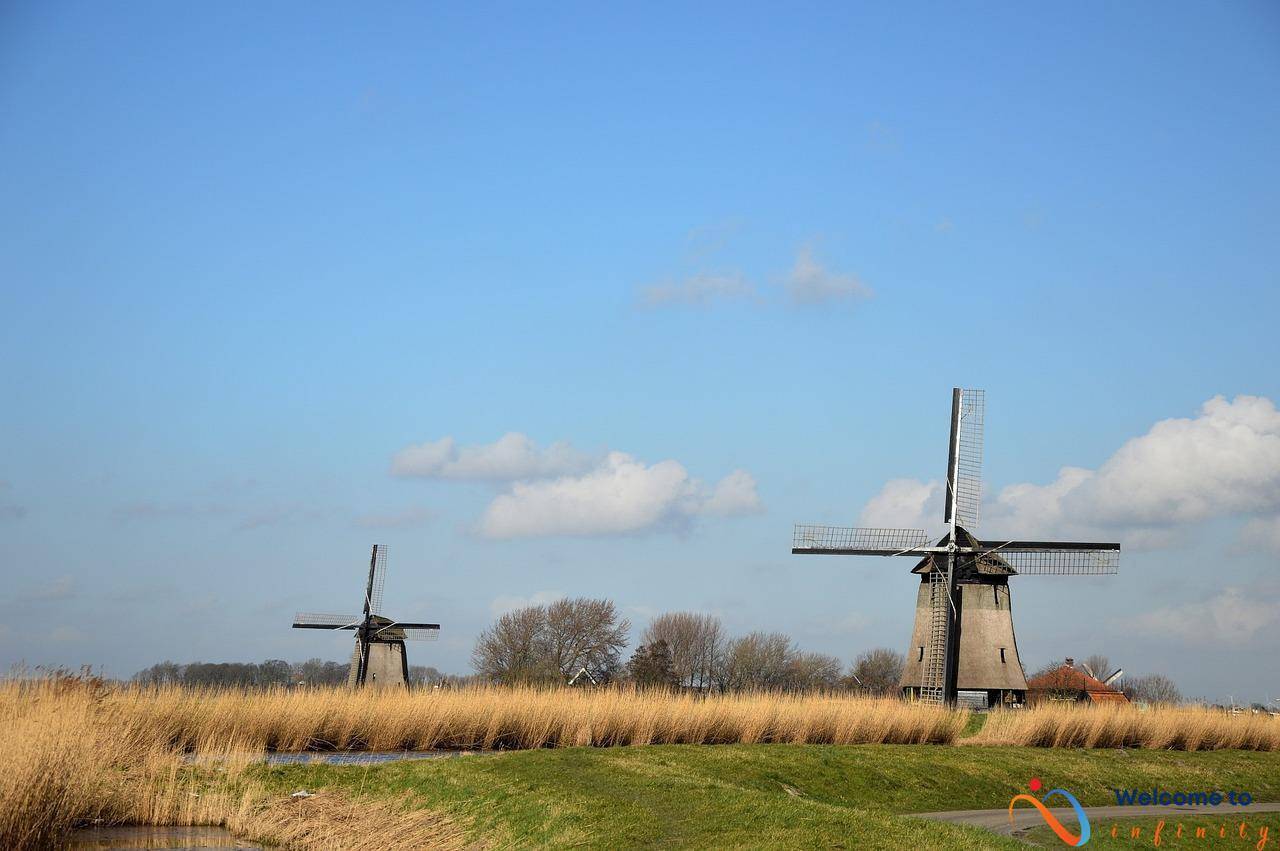There is no doubt that tourism can have a significant impact on a destination's culture and heritage. While it can bring economic benefits to communities, it can also pose a threat to traditional practices and cultural sites. As such, it's essential to strike a balance between economic growth and preservation efforts to ensure that cultural heritage is protected for future generations.
This article aims to explore how tourism can impact cultural heritage and the communities that preserve it, and the need for stakeholders to take a responsible approach towards balancing economic growth and preservation efforts. While there are undoubtedly challenges associated with maintaining cultural heritage in the face of increasing tourism, there are also significant benefits when it's done right.
- Positive Impact of Tourism on Culture: When managed correctly, tourism can provide economic benefits to communities and preserve cultural heritage by generating funds for restoration and conservation efforts.
- negative Impact of Tourism on Culture: However, the commercialization of cultural sites and over-tourism can lead to degradation and erosion of cultural heritage, loss of traditional practices and cultural commodification.
Through exploring case studies such as Venice, Angkor Wat, and Machu Picchu, this article highlights the negative impacts of tourism on cultural heritage. However, it also discusses various strategies used by communities to preserve cultural heritage, such as implementing sustainable tourism practices, promoting responsible tourism, and limiting visitors' number. It also provides examples of successful preservation efforts, such as the restoration of the historical city of Dubrovnik and the indigenous tourism initiatives in Australia and New Zealand.
The article emphasizes the need for stakeholders to strike a balance between economic development and cultural preservation and suggests that sustainable tourism policies can help achieve this goal. It's our responsibility to take a responsible approach to the preservation of cultural heritage, ensuring that it continues to enrich the lives of future generations.
Positive Impact of Tourism on Culture
Tourism has several positive impacts on cultural heritage. First and foremost, it generates significant economic benefits for local communities. Through tourism, communities can earn foreign exchange, create job opportunities, and develop local businesses. These economic benefits can directly contribute to the preservation of cultural heritage by providing funds for restoration and conservation efforts, as well as improving the living standards of those involved in cultural preservation efforts.
Moreover, tourism can play an essential role in promoting cultural exchange and understanding between different cultures. Visitors can learn about different cultures, traditions, and ways of life. By fostering cultural understanding and appreciation, tourism can help promote the preservation of cultural heritage by building support and respect for cultural practices.
Tourism can also provide a platform for the promotion and marketing of cultural heritage. Local communities can showcase their unique traditions and ways of life, which can lead to an increased interest in and demand for these cultural experiences. As a result, local communities can generate a sense of pride and ownership over their cultural heritage, which can further strengthen preservation efforts.
In conclusion, tourism can have a positive impact on cultural heritage by providing economic benefits, promoting cultural exchange and understanding, and fostering a sense of pride and ownership over cultural heritage. These benefits highlight the need to balance economic development and preservation efforts carefully and implement sustainable tourism practices to ensure the long-term preservation of cultural heritage.
Negative Impact of Tourism on Culture
While tourism can bring economic benefits to communities, its negative impacts on culture cannot be ignored. Over-tourism and the commercialization of cultural sites can lead to a variety of issues, including the degradation and erosion of cultural heritage. When too many tourists visit a site, increased foot traffic can cause physical damage and deterioration to the structures, paintings, and other artifacts present. For example, at the Angkor Wat temple complex in Cambodia, excessive tourism has led to damage and theft of several stone carvings, and the erosion caused by foot traffic is visibly evident.
Furthermore, tourism can also contribute to the loss of traditional practices and the commodification of cultures. In some cases, local traditions and beliefs are exploited for the sake of tourism, leading to inaccuracies and misrepresentations of the culture. Tourists may buy souvenirs or participate in activities that do not align with cultural beliefs or values, simply for the novelty of the experience. This can result in the loss of authenticity and integrity of the culture, with the locals adapting to suit the tourists' needs and expectations.
To address these negative impacts, some cultural sites have implemented measures such as limiting the number of visitors per day, establishing strict codes of conduct for tourists, or charging higher fees for entry or access to certain parts of the site. These actions can help to preserve the integrity of cultural heritage and prevent further degradation. However, they can also limit the economic benefits of tourism, making it a challenging balance to achieve. Ultimately, it is important for stakeholders to consider the long-term effects of tourism on cultural heritage and work towards sustainable tourism practices and policies.
Examples of Negative Impacts on Culture
When tourism becomes unsustainable, it can have a negative impact on cultural heritage. One of the prime examples is Venice, Italy. The city is struggling with too high tourist inflow, leading to severe overcrowding, pollution, and depopulation in the historical center. The continuous passage of large cruise ships has further accelerated the deterioration of the site. In 2019, UNESCO warned the Italian government that Venice may be put on its list of the world heritage sites in danger.
Another instance is Angkor Wat, the world-famous temple complex in Cambodia. The site receives over two million visitors annually, and the growing number of tourists has caused significant damage to the fragile structure. Moreover, the unregulated growth of hotels, restaurants, and other tourism-related businesses around the site has created environmental problems and caused displacement of local communities.
Machu Picchu, the iconic archaeological site in Peru, is also in danger. The Peruvian government is trying to control the tourist influx to protect the site, but it is still struggling with the effects of uncontrolled tourism. The constant flow of visitors, coupled with poor management, pollution, and waste, is taking its toll on the site's structural integrity. In 2019, a study showed that 30 percent of the renowned Inca Trail, leading to Machu Picchu, was at “high risk” of collapse due to damage and erosion caused by heavy tourism.
These examples show how overtourism and unregulated tourism can lead to the degradation and loss of cultural heritage. It is crucial to have sustainable tourism policies that take the preservation of cultural heritage and the well-being of local communities into account.
Preservation Efforts and Strategies
The preservation of cultural heritage is of utmost importance, and communities and stakeholders across the world have implemented various strategies to protect it. One of the most effective ways to preserve cultural heritage sites is by implementing sustainable tourism practices. Sustainable tourism aims to minimize the negative impact of tourism on the environment and local communities while generating economic benefits.
Communities can also promote responsible tourism and cultural exchange. Responsible tourism encourages tourists to respect local cultures and traditions. Cultural exchange programs can help to promote understanding and appreciation between different cultures. Additionally, these programs can provide economic opportunities for local communities and contribute to the preservation of cultural heritage.
Limiting visitor numbers is another strategy used by communities to preserve cultural heritage. Overcrowding can lead to the degradation and erosion of cultural sites, and limiting visitor numbers can help to minimize the negative impacts of tourism on cultural heritage. For example, the number of visitors to Angkor Wat in Cambodia is limited to prevent damage to the temple complex.
In summary, communities and stakeholders have implemented various strategies to preserve cultural heritage, such as promoting sustainable tourism practices, responsible tourism and cultural exchange, and limiting visitor numbers. These strategies can help to protect cultural heritage sites and ensure that future generations can enjoy them.
Best Practices in Cultural Tourism
When it comes to preserving cultural heritage and promoting sustainable cultural tourism, several communities and destinations have implemented various strategies and best practices. Dubrovnik, for instance, is a perfect example of a city that has successfully restored its historical sites and protected its traditional practices. The city implemented strict regulations on tourism activities, limited visitor numbers, and introduced sustainable tourism practices that helped preserve its cultural heritage.
Moreover, Australia and New Zealand have initiated indigenous tourism initiatives to promote their cultural heritage and practices. The initiatives not only facilitated economic growth but also allowed tourists to learn about and experience different cultures. The indigenous communities were directly involved and empowered in the tourism industry, alleviating poverty and promoting social and cultural coherence.
Other best practices in cultural tourism include collaborative efforts between communities, tourism operators, local governments, and other stakeholders in developing and implementing sustainable tourism policies. Cultural exchange programs that promote mutual respect and understanding between different cultures are also encouraged.
These best practices and strategies are essential in balancing economic growth and the preservation of cultural heritage. It is crucial to recognize that tourism can have both positive and negative impacts on cultural heritage and communities that preserve it. Thus, sustainability should be at the core of any tourism activities and policies to ensure that future generations can also enjoy and learn from the cultural heritage of different communities.
Balancing Preservation and Economic Growth
The clash between economic development and cultural preservation is a complex issue that requires careful consideration by stakeholders in the tourism industry. While tourism can provide valuable economic benefits to communities, it also has the potential to cause damage to cultural heritage. Therefore, a balance must be struck between economic growth and cultural preservation efforts.
One way to achieve this balance is through the implementation of sustainable tourism policies. These policies promote responsible tourism practices that minimize negative impacts on cultural sites while also ensuring economic benefits. By prioritizing the preservation of cultural heritage, communities can attract visitors who share this same value, leading to a more sustainable and respectful tourism industry.
Another effective strategy is to limit visitor numbers to popular cultural sites. Over-tourism can cause overcrowding and lead to the degradation and erosion of cultural heritage. By controlling the number of visitors, communities can ensure that cultural sites are protected and preserved for future generations.
Additionally, promoting cultural exchange can help preserve cultural heritage. As visitors learn about the history and traditions of local communities, they gain a deeper understanding and appreciation of the cultural significance of these sites. This can lead to a greater sense of responsibility for their preservation and a greater respect for the communities who maintain them.
In conclusion, sustainable tourism policies that prioritize cultural preservation can help to achieve the delicate balance between economic growth and cultural heritage protection. By limiting visitor numbers, promoting responsible tourism, and encouraging cultural exchange, communities can preserve their cultural heritage while also reaping the economic benefits of the tourism industry.












